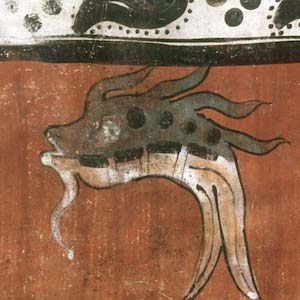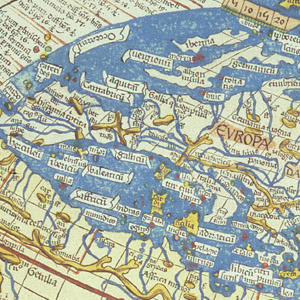Post-Classical (500 CE - 1450 CE)

A PreColumbian Portfolio: An Archive of Photographs
Each database record includes a caption, a brief (about 20-word) description, and information on the culture associated with the artifact, such as Maya, Olmec, or Zapotec.How to Teach Children: Childrearing and Confucian Doctrine
This excerpt comes from a chapter of Okina mondô, or Dialog with an Old Man, by Nakae Tôju (1606–1648), a Neo-Confucian philosopher. The Dialog teaches practical ethics through a series of questions and answers between a young disciple, Taijû, and a wise old master, Tenkun.

Maya Vase Database: An Archive of Rollout Photographs
The vases include scenes of palace life, mythology, warfare, and animals.
Great Unsolved Mysteries in Canadian History
Students may begin by focusing on 'solving' the crime itself, but along the way will be drawn into the consideration of wider issues
Al-Idrisi's World Map
The Nuzhat al-mushtāq fī ikhtirāq al-āfāq, most commonly known in the West as the Tabula Rogeriana ("The Book of Roger" in Latin), is a manuscript created by the Arab geographer Muhammad al-Idrisi that contains a highly detailed, partial-world map and extensive descriptions of the s

Ptolemy's World Map
Claudius Ptolemy lived in the city of Alexandria in Egypt from about 100 to 170 CE. At that time Egypt was a Roman province and Ptolemy may have been a Roman citizen.
The Magna Carta
King John of England granted the Magna Carta ("the great charter") on 15 June 1215. Leading nobles had demanded confirmation of their liberties and had threatened war if their demands were not met.
Islamic Empire: Official Document, Jewish Marriage Contract
Within the context of patriarchal societies, women are dependent upon their male relatives to look out for their best interests.
Islamic Empire: Poem, Rabi’a al-‘Adawiyya
In these poetic lines by Rabi’a al-‘Adawiyya, one of the most important founders of the mystical element of Islam, known as Sufism, we see an essential element of Sufi thought, the creation of which is often attributed to her: the ideal of divine love.
Islamic Empire: Miracle Story, Rabi’a al-‘Adawiyya
Rabi’a al-‘Adawiyya from Basra was one of the most important founders of the mystical element of Islam, known as Sufism. The stories about her life and teachings illustrate a woman free from many of the traditional constraints placed on women’s lives.